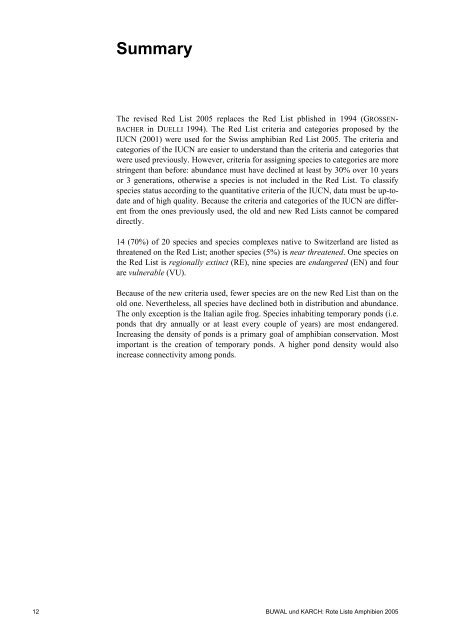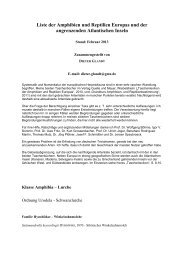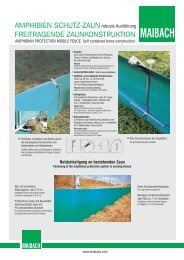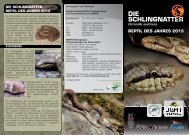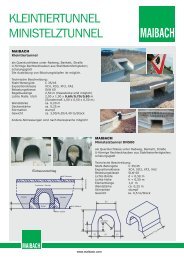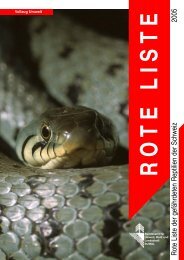Rote Liste der gefährdeten Amphibien der Schweiz 2005 - Karch
Rote Liste der gefährdeten Amphibien der Schweiz 2005 - Karch
Rote Liste der gefährdeten Amphibien der Schweiz 2005 - Karch
Erfolgreiche ePaper selbst erstellen
Machen Sie aus Ihren PDF Publikationen ein blätterbares Flipbook mit unserer einzigartigen Google optimierten e-Paper Software.
Summary<br />
The revised Red List <strong>2005</strong> replaces the Red List pblished in 1994 (GROSSEN-<br />
BACHER in DUELLI 1994). The Red List criteria and categories proposed by the<br />
IUCN (2001) were used for the Swiss amphibian Red List <strong>2005</strong>. The criteria and<br />
categories of the IUCN are easier to un<strong>der</strong>stand than the criteria and categories that<br />
were used previously. However, criteria for assigning species to categories are more<br />
stringent than before: abundance must have declined at least by 30% over 10 years<br />
or 3 generations, otherwise a species is not included in the Red List. To classify<br />
species status according to the quantitative criteria of the IUCN, data must be up-todate<br />
and of high quality. Because the criteria and categories of the IUCN are different<br />
from the ones previously used, the old and new Red Lists cannot be compared<br />
directly.<br />
14 (70%) of 20 species and species complexes native to Switzerland are listed as<br />
threatened on the Red List; another species (5%) is near threatened. One species on<br />
the Red List is regionally extinct (RE), nine species are endangered (EN) and four<br />
are vulnerable (VU).<br />
Because of the new criteria used, fewer species are on the new Red List than on the<br />
old one. Nevertheless, all species have declined both in distribution and abundance.<br />
The only exception is the Italian agile frog. Species inhabiting temporary ponds (i.e.<br />
ponds that dry annually or at least every couple of years) are most endangered.<br />
Increasing the density of ponds is a primary goal of amphibian conservation. Most<br />
important is the creation of temporary ponds. A higher pond density would also<br />
increase connectivity among ponds.<br />
12 BUWAL und KARCH: <strong>Rote</strong> <strong>Liste</strong> <strong>Amphibien</strong> <strong>2005</strong>


